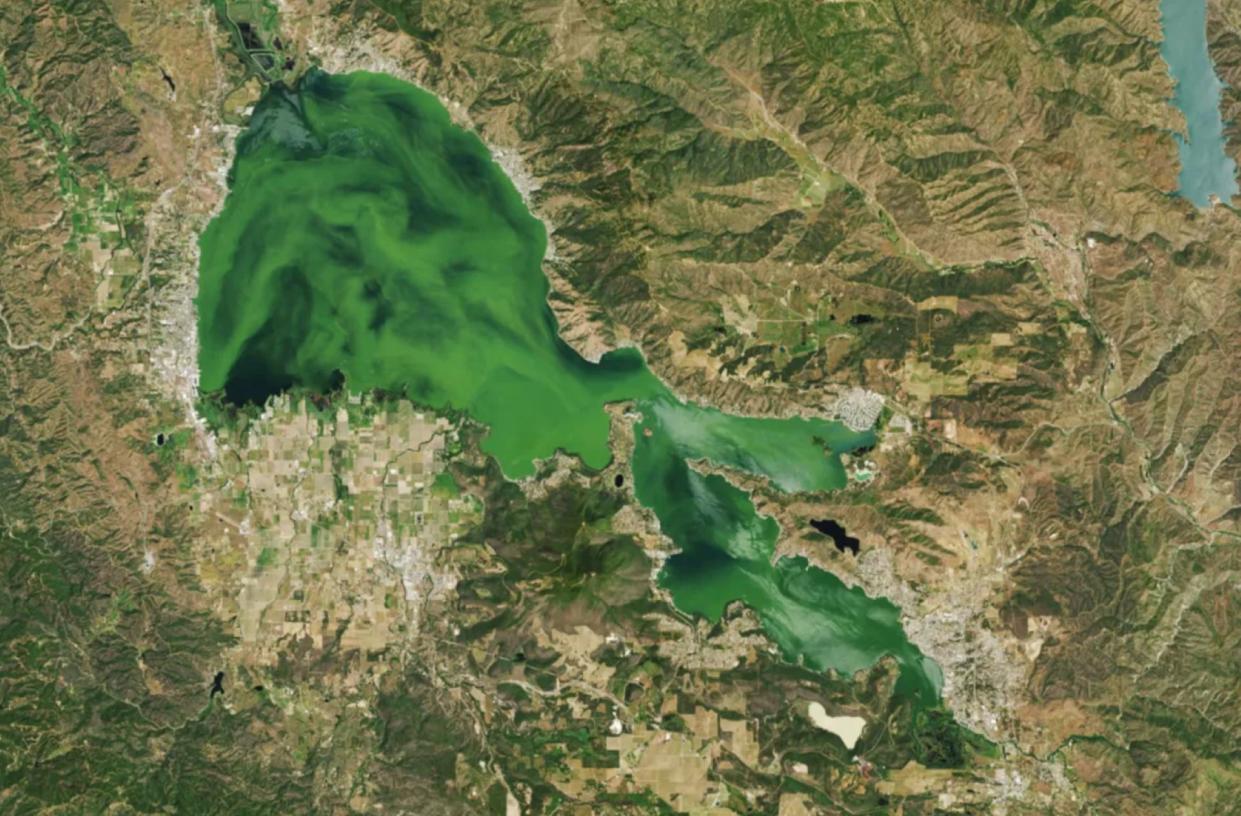NASA satellite images show lake's concerning algal bloom visible from space: 'It has occurred earlier and in greater abundance than in typical years'

California's Clear Lake looks more like a green blob on a NASA satellite image. Algae and other types of phytoplankton are probably to blame for the discoloration.
What's happening?
Clear Lake is familiar to fishermen as the "bass capital of the West," but it is a popular attraction for many reasons. Visitors enjoy swimming, boating, and water skiing on the state's largest natural lake within California.
The 68-square-mile lake has turned green because of algae blooms. Public health officials warn that people and pets should avoid water where toxic blue-green algae may be present.
"The appearance of cyanobacteria in Clear Lake is not unusual, but it has occurred earlier and in greater abundance than in typical years," the Press Democrat, a local newspaper, reported (via the Guardian).
Why is the appearance of blue-green algae in Clear Lake so concerning?
Cyanobacteria, also called blue-green algae, are naturally occurring in freshwater ecosystems. However, they become a problem when warm temperatures combined with too many nutrients create conditions conducive to cyanobacterial blooms.
The cyanobacteria have given Clear Lake a bright green hue so intense that NASA satellites can see it from space. The agency released pictures of a green Clear Lake in May.
Watch now: These futuristic gas stations could completely change what it's like to own an EV
According to the Environmental Protection Agency, "when cyanobacteria degrade, they may release toxins that can be harmful to aquatic and human life." The EPA says exposure to the toxins can cause "skin rashes, eye irritations, respiratory symptoms, and in some cases gastroenteritis, liver and kidney failure, or death."
What's being done about algae blooms that can turn toxic?
Warm, slow-moving water is ideal for harmful algal blooms to thrive. Unfortunately, the warming of our world due to heat-trapping gases building up in our atmosphere is expected to increase the toxicity and duration of these blooms.
Anything we can do to help limit harmful carbon will help keep the planet cooler and reduce the number of toxic algae blooms. Steps we can take include switching to LED bulbs. This alone will save you hundreds of dollars on your power bill and reduce hundreds of pounds of carbon dioxide pollution.
Properly weatherizing our homes also helps. It is another win-win solution that saves money while preventing thousands of pounds of carbon pollution from being released into our atmosphere.
Join our free newsletter for cool news and cool tips that make it easy to help yourself while helping the planet.

